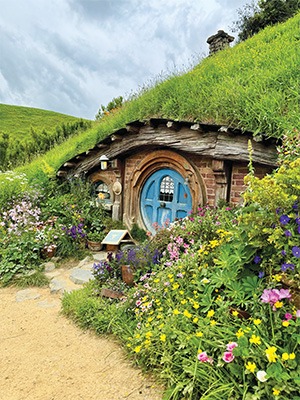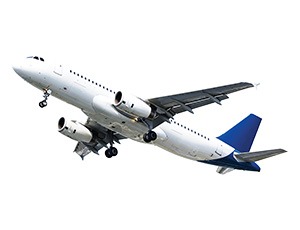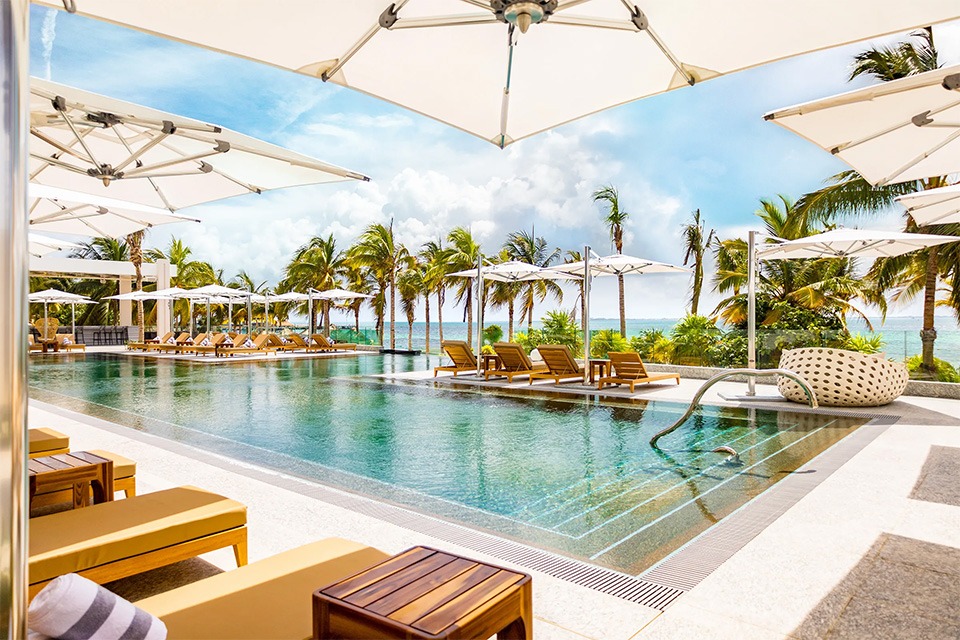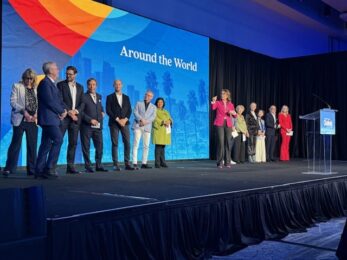Attract and engage attendees with these 3 travel trends
There’s that old tale about the crusty Mainer who, when asked directions, replied, “You can’t get there from here.”
Well, we all know you can. But the real question to ask is not “which way?” It’s “why go?” The lure of travel destinations, like almost everything else, follows trend lines. As a meeting prof, you can attract and engage attendees by piggybacking on them.
Here are three to plan for.
 Trend #1: Getting a Contact High—from Show Biz
Trend #1: Getting a Contact High—from Show Biz
We may not be able to walk through the looking glass like Alice in Wonderland, but we can come close by heading to the sets where favorite movies and TV shows were filmed. It’s been called taking a location vacation or, more cleverly, set jetting.
The trend has been building at least since the James Bond spy thrillers began globetrotting to OMG destinations. Heightened by the otherworldly terrain of the “The Lord of the Rings” and “The Hobbit” trilogies, it is now in overdrive with wildly popular series set in Insta-worthy locales like PBS’s “Downton Abbey” and HBO’s “The White Lotus.”
Read More: Luxury, Culture and White Lotus in Thailand
At times, the set jetting trend has taken a toll. Thailand’s Maya Beach, for example, which attained worldwide fame in the 2000 film “The Beach,” has been repeatedly closed to recover from overtourism.
Other destinations have not been shy about embracing the buzz. Four Seasons Resort Maui at Wailea in Hawai’i, for example, where White Lotus newlyweds stayed in the Pineapple Suite and lounged poolside in Season One, jumped on the fantasy ride, noting in a web post, “At Four Seasons, you’ll find plenty of opportunities to create some scene-stealing moments of your own.” The post cited research that found nearly two-thirds of travelers have considered a set-jetting trip—and 39% have actually booked a destination after seeing it on screen.

New Zealand
Recently, Hobbiton Movie Set in New Zealand’s Matamata, where the “Rings” and “Hobbit” films were shot on what was then a family farm, began actively hosting FAMs for planners to showcase not only its 44 permanently reconstructed Hobbit Holes and The Green Dragon Inn, but also meeting space that includes The Millhouse, described as Middle Earth-perfect for cozy corporate meetings with its exposed wooden beam ceilings, crackling fireplace and curated set decor belying the hidden AV tech and commercial kitchen; and The Hub, featuring more than 17,000 sq. ft. of meeting space for up to 130 guests.
That set-jet pin drop’s newest attraction is Bagshot Row, which Hobbit fans will know as the street where Bilbo and Frodo Baggins lived. “We think it’s going to be very popular in the business events and incentive space,” enthuses Shayne Forrest, general manager of Hobbiton.
“Nearly two-thirds of travelers have considered a set-jetting trip—and 39% have actually booked a destination after seeing it on screen.”
In the continental U.S., name any major city—and many less heralded spots—and a beloved movie or TV series was probably set there. Think the Cheers Bar (or its inspiration, anyway) on Beacon Hill in Boston, the Victorian Painted Lady in San Francisco where Mrs. Doubtfire impersonated the nanny, Margot Robbie and Ryan Gosling frolicking on the Venice Beach Boardwalk in “Barbie,” the barbershop scene in “The Godfather” in the St. Regis New York, the gritty backstreets of downtown Los Angeles in the noir thriller “The Little Things,” the “Field of Dreams” movie site in Dyersville, Iowa. And on and on.
As long as the indelible stories and images we associate with such settings continue to enthrall, this trend will be available for planners to infuse their programs with a frisson of nostalgia and emotion.
 Trend #2: Young Attendees Just Wanna Have Fun—And So Does Everyone Else
Trend #2: Young Attendees Just Wanna Have Fun—And So Does Everyone Else
Bleisure travel—combining business travel with PTO to more fully experience a destination—remains on the upswing since the pandemic lockdown era. It is increasingly popular among all groups, but especially among Gen-X and millennial business travelers.
In 2021, 37% of corporate travelers from North America extended their business trips to do sightseeing and other leisure activities, according to Global Business Travel Association. Eight out of 10 corporate travel managers polled said they have seen interest in blended travel spike.
Read More: Stop the Generational Stereotyping
The bleisure trend has had a striking economic impact, lifting up hospitality and other travel-related businesses when they needed it most. In 2022, American Airlines said almost half of its revenue came from bleisure itineraries. Vasu Raja, who was American’s chief commercial officer until June, told a business event that nearly half its customers no longer slotted neatly into traditional “business” and “leisure” categories.
“People don’t have to keep a work life for five days and a personal life for two days, and carve out two weeks a year for vacation,” Raja said. As a result, some air routes thought of as heavily play-bound, like Los Angeles to Las Vegas, now have more seats than business routes like L.A. to New York City, according to global travel data provider OAG.

The implications for meeting profs are clear. Conference attendees make up more than two-thirds of bleisure trips, and nearly half of those attending an external meeting tack on bleisure travel, according to data collected by private jet company Stratos. So, planning a gathering in a destination known for its recreational, cultural or other leisure-focused attractions is more likely to find its way onto the radar of potential attendees—even if the destination is known primarily for family fun.
A Visit Anaheim survey found that 65% of respondents believe it is just fine for family or friends to tag along on corporate trips. It ranked the benefits of bleisure travel, with 70% saying exploring a new destination topped the list; this was followed by having a change in work environment (57%) and enjoying new experiences (55%).
At the same time, this trend reinforces how important it is for pre-event communications to promote a destination’s attractions, including family fare, beyond the event’s scheduled interactions with the locale. This is especially true for places not known as magnets for vacationers.
Although bleisure travel is being embraced by all generations, its most powerful appeal is among millennials and Gen-Xers. A recent survey found that 86% of millennial employees are likely to add on extra days to business travel for exploring and relaxing; other data indicates that millennials in particular think of all business travel as a perk that confers status. Gen-X travelers are not far behind: Three-fourths (76%) of them welcome the opportunity to build in free days before or after the meeting. Many of those surveyed take satisfaction from thinking this blending helps them reduce the environmental impact of air travel and traveling overall, as well.
 Trend #3: Leave the Rug Rats at Home
Trend #3: Leave the Rug Rats at Home
At first blush, this may seem the opposite of the bleisure trend, but it’s not. It’s only the opposite of one segment of it, which is bringing along the kids for a mini-vacation. This is the trend toward luxury in the form of adults-only, all-inclusive boutique hotels and resorts.
The term “adults-only” can sound a little tawdry—but it’s far from it. If your group would appreciate a break from the squeals of children splashing in the pool or running madcap through the lobby, this is an alternative they will savor. Or perhaps even make it a bleisure stay with a romantic partner. Operative adjectives include: private, tranquil, pampered and rejuvenated.
Read More: All-in on All-Inclusives
Cancun’s newest all-inclusive property, for example, is adults-only Hotel Mousai Cancun, on the white sand of Costa Mujeres. Its 88 oceanfront suites are luxuriously non-kid-proof, as are the interactive tequila and wine tastings, yoga classes, dance lessons, a rooftop infinity pool and an open-air shopping and entertainment concept “where art, gastronomy and culture converge.” The property caters to over-the-top destination weddings and high-end incentives.

Adults-only hotels were pioneered in Spain in the late 2010s, though “honeymoon holidays” in Europe date back decades. Bookings at luxury lodgings with a no-kids policy have tripled in recent years, according to International Hotel Consulting, which estimates there are more than 600 such properties across the globe. Many are in dreamy beachfront settings in Mexico and the Caribbean, though they can also be found in Croatia, Bali and even Las Vegas.
Many sweeten the offering by providing butlers, Michelin-grade dining, private beaches, double Jacuzzis in sleeping rooms, exclusive access to VIP areas as well as customizable amenities and packages. And some do double duty: Margaritaville Island Reserve Resort Cap Cana in the Dominican Republic, which has 3,000 sq. ft. of meeting space, is divided into Hammock, an adults-only tower, and Wave, which is family-friendly. Secrets & Dreams Bahia Mita on Banderas Bay near Puerto Vallarta, Mexico, consists of the adults-only Secrets (278 guest rooms) and family-friendly Dreams (363 guest rooms), but these share many amenities.
What’s the allure for groups? An indulgent yet chill atmosphere that can be work- or reward-focused, as necessary. Take Lake Austin Spa Resort, for example. A half-hour’s drive from the urban thrum of downtown Austin, Texas, on a quiet lakeshore, the 40-room boutique resort was named No. 3 Best All-Inclusive Resort in the country by USA Today. You must be at least 16 years old to be a guest.
“Adults-only resorts offer an indulgent yet relaxed atmosphere that can be work- or reward-focused, as necessary.”
The resort hosts small executive retreats, one at a time, as well incentives and team building for up to 20 guests. It boasts of an environment that “encourages conversation, idea exchanges, creativity and inspiration as unique as your group.” Between sessions (or instead of them) there’s wakeboarding on the waters of Lake Austin, exploring a river by kayak or restoring equilibrium with paddleboard yoga. Dining menus lean heavily on the resort’s own garden and local farmers and producers.
Who doesn’t need a break from the workaday life? Or the kids, much as they’re loved. Plan for it.
This article appears in the July/August 2024 issue. You can subscribe to the magazine here.




